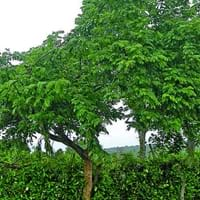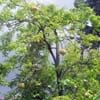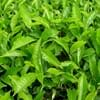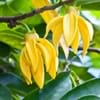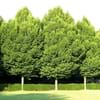Life Span
Perennial
Perennial
Origin
Hybrid origin, Southeast Asia, Southern India
Mexico, Central America, South America
Types
Kaghzi Mirzapuri, Kaghzi Gonda, Kagzi Etawah and Kagzi Banarasi
Not available
Number of Varieties
Not Available
Habitat
Tropical Climate, Tropical regions, Wet forest
Subtropical climates, tropical environments, Tropical regions
USDA Hardiness Zone
9-15
10-15
Sunset Zone
H1, H2, 12, 13, 16, 17, 18, 19, 20, 21, 22, 23, 24
H1, H2, 13, 23, 24
Habit
Upright/Erect
Oval or Rounded
Flower Color
White, Yellow green
Pink, Light Pink
Flower Color Modifier
Not Available
Bicolor
Fruit Color
Green, Brown
Green, Chocolate
Leaf Color in Spring
Green, Ivory
Green
Leaf Color in Summer
Green, Ivory
Green
Leaf Color in Fall
Green, Ivory
Green
Leaf Color in Winter
Green, Ivory
Green
Leaf Shape
Trident shaped
Pinnate
Plant Season
Spring, Summer, Fall, Winter
Spring
Sunlight
Full Sun, Partial Sun
Full Sun, Partial Sun
Type of Soil
Loam, Sand
Loam, Sand
The pH of Soil
Neutral
Acidic, Neutral, Alkaline
Soil Drainage
Well drained
Average
Bloom Time
Indeterminate
Spring, Late Spring
Tolerances
Not Available
Drought, Dry Conditions
Where to Plant?
Ground
Ground
How to Plant?
Stem Cutting
Stem Cutting
Plant Maintenance
Low
Low
Watering Requirements
Needs good drainage, Reduce water once established
Average Water Needs, Keep the ground moist but not water-logged
In Summer
Lots of watering
Lots of watering
In Spring
Moderate
Moderate
In Winter
Average Water
Average Water
Soil pH
Acidic, Neutral
Acidic, Neutral, Alkaline
Soil Type
Clay, Loam, Sand
Loam, Sand
Soil Drainage Capacity
Well drained
Average
Sun Exposure
Partial Sun, Partial shade
Full Sun, Partial Sun
Pruning
Cut upper 1/3 section when young to enhancegrowth, Remove dead branches
Remove damaged leaves, Remove dead branches, Remove dead leaves
Fertilizers
General purpose fertilizer with an NPK ratio 3-1-2
All-Purpose Liquid Fertilizer, Fertilize in early spring, Nitrogen, Phosphorous, Potassium, Requires high amount of nitrogen
Pests and Diseases
Aphids, Downy mildew, fungus
Aphids, Brown Spots, Scab, Scorch
Plant Tolerance
Full Sun, Soil Compaction
Drought, Dry Conditions
Flower Petal Number
Single
Single
Showy Fruit
No
Not Available
Fragrant Flower
Yes
Not Available
Foliage Texture
Coarse
Medium
Foliage Sheen
Matte
Matte
Attracts
Ants, Birds, Leafminer, Not Available, Squirrels
Bees, Not Available
Allergy
Dizziness, Stomach pain
Not Available
Aesthetic Uses
Beautification, Showy Purposes
Beautification, Showy Purposes
Beauty Benefits
Not Available
Good for skin, Reduce Bruises
Environmental Uses
Air purification
Agroforestry, Fixes Nitrogen, Insect Repellent, soil stabilisation
Medicinal Uses
Antiasthamatic, Antirheumatic, Arthritis, Dermatitis
Antifungal, Cold, Expectorant, Fever, Rheumatism, Sedative, Ulcers
Part of Plant Used
Leaves
Flowers
Other Uses
Used as Ornamental plant, Used for its medicinal properties
Cattle Fodder, Used as firewood, Wood is used for making furniture
Used As Indoor Plant
No
No
Used As Outdoor Plant
Yes
Yes
Garden Design
Container, Feature Plant, Mixed Border, Tropical
Shade Trees, Street Trees, Tropical
Botanical Name
Aegle marmelos
GLIRICIDIA sepium
Common Name
Bael , Bengal Quince, Wood apple
Mexican Lilac, Mother-of-coffee, Quickstick
In Hindi
बिल्व, बेल, बेलपत्थर,
QUICKSTICK
In German
Bengalische Quitte, Madjobaum
QUICKSTICK
In French
fruit de Beli, Coing du Bengale, Bilva
QUICKSTICK
In Spanish
membrillo de Bengala, Bilva
QUICKSTICK
In Greek
Βεγγάλης Κυδώνι
QUICKSTICK
In Portuguese
Fruta de Bael
QuickStick
In Polish
Kleiszcze smakowite
QUICKSTICK
In Latin
Bilwa
Quickstick
Phylum
Magnoliophyta
Magnoliophyta
Class
Magnoliopsida
Magnoliopsida
Family
Solanaceae
Fabaceae
Genus
Brugmansia
Gliricidia
Clade
Angiosperms, Asterids, Eudicots
Angiosperms, Eudicots, Rosids
Subfamily
Solanoideae
Faboideae
Number of Species
Not Available
Importance of Bael and Quickstick
Want to have the most appropriate plant for your garden? You might want to know the importance of Bael and Quickstick. Basically, these two plants vary in many aspects. Compare Bael and Quickstick as they differ in many characteristics such as their life, care, benefits, facts, etc. Every gardener must at least have the slightest clue about the plants he wants to plant in his garden. Compare their benefits, which differ in many ways like facts and uses. The medicinal use of Bael is Antiasthamatic, Antirheumatic, Arthritis and Dermatitis whereas of Quickstick is Antifungal, Cold, Expectorant, Fever, Rheumatism, Sedative and Ulcers. Bael has beauty benefits as follows: Not Available while Quickstick has beauty benefits as follows: Not Available.
Compare Facts of Bael vs Quickstick
How to choose the best garden plant for your garden depending upon its facts? Here garden plant comparison will help you to solve this query. Compare the facts of Bael vs Quickstick and know which one to choose. As garden plants have benefits and other uses, allergy is also a major drawback of plants for some people. Allergic reactions of Bael are Dizziness and Stomach pain whereas of Quickstick have Not Available respectively. Having a fruit bearing plant in your garden can be a plus point of your garden. Bael has no showy fruits and Quickstick has no showy fruits. Also Bael is not flowering and Quickstick is not flowering . You can compare Bael and Quickstick facts and facts of other plants too.

